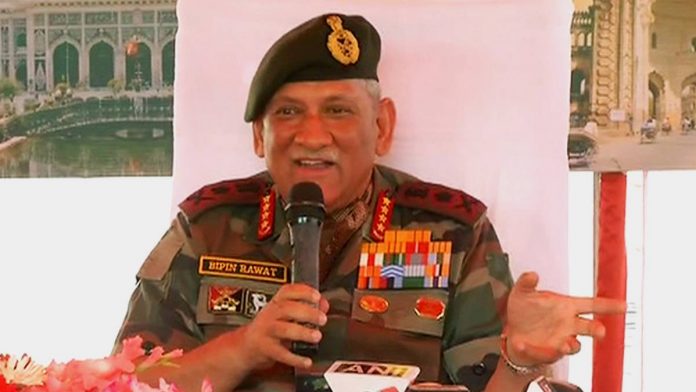
New Delhi: Army Chief General Bipin Rawat Saturday said soldiers of the People’s Liberation Army (PLA) may have accompanied a dozen civilians who reportedly protested and intimidated villagers celebrating the Dalai Lama’s 84th birthday in eastern Ladakh’s Demchok sector but there was no intrusion of military troops into the Indian territory, as some locals had earlier claimed.
Tensions on the India-China border snowballed on 6 July after a dozen Chinese nationals sporting civilian clothes reached close to the Line of Actual Control (LAC) in eastern Ladakh and protested against Tibetans celebrating Dalai Lama’s birthday near Kuyul village in Fukche area. They reportedly arrived in vehicles carrying banners that read: “Ban all activities to split Tibet”.
“Chinese nationals had come and were accompanied by their soldiers. Nobody would want civilians to be left by themselves at the border without any scrutiny. Both sides will continue to monitor the activity of civilians along the LAC and even the Line of Control (LoC),” Rawat said on the sidelines of a national seminar to commemorate 20 years of Kargil conflict that was organised by Centre for Land Warfare Studies (CLAWS).
Demchok: The ‘sensitive’ area
The army chief also said both sides have different perceptions about alignment of the LAC. “There are gaps in between. So while patrolling both sides often enter into each other’s areas,” he said.
To questions on whether the people who had come to Ladakh were Chinese civilians or soldiers, Rawat merely said, “We have a very good working relationship with the Chinese”.
Demchok is one of the 23 “disputed and sensitive areas” identified on the LAC that witnesses frequent face offs between troops of the two armies.
In 2017, armies of both nations had a military face-off for nearly 73 days at the Bhutanese territory of Doklam.
On India’s surveillance capabilities
On a separate question on how equipped India is in terms of surveillance mechanisms 20 years after the Kargil conflict, Rawat said there has been an immense change in the nation’s capabilities since then.
He said that besides physical reconnaissance, surveillance capabilities on the borders include picking up any misadventures from adversaries in real time and taking action against them.
“We are also looking at quadcopters and tactical UAVs for better surveillance in operational areas,” he said, adding the surveillance is for all sectors along the International Border, LoC and LAC.
Rawat’s remarks come in the backdrop of former Army Chief Ved Prakash Malik’s claims that surveillance and intelligence failure were among the main factors that led to the 1999 Kargil intrusion.
Read Global Pulse for a sampler of the big international stories, and why they matter